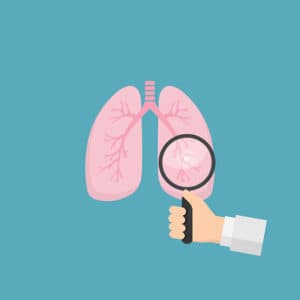Duchenne Muscular Dystrophy overview
Duchenne Muscular Dystrophy (DMD) is an X-linked recessive disease which means the defect is present in the X chromosome. Therefore, this medical condition is transmitted from the mother to the male child.
Let me explain a bit, we know males have one X chromosome and one Y chromosome. Males always get their X chromosome from their mothers and the Y chromosome from their fathers. If there is a defect in the mothers’ X chromosome then the male children are going to get that defective X chromosome and that makes the disease appear in the males.
For female children, also get a defective X chromosome from their mother but they also receive another X chromosome from their father. Since they have one healthy copy of the X chromosome from their fathers they do not show the features of DMD. Instead, they just carry that defective X chromosome. That’s why they are called the carriers.
There is one exception where females can get DMD symptoms and it occurs when there is only one X chromosome in females, for example in Turner’s syndrome. In Turner’s syndrome, the karyotype is 45X0, meaning there is no Y chromosome present and a solitary X chromosome is present which comes from their moms.
The defective gene
The prevalence of DMD is one in 4000 male live births. There is a mutation or deletion of the ‘dystrophin’ gene in Xp21. There is another condition called Becker Muscular Dystrophy (BMD) where there is a partial deletion of the ‘dystrophin’ gene hence the symptoms are milder and appear later than DMD.
Dystrophin is a major structural component of muscle cells. Dystrophin links the cytoskeleton of muscle cells to the extracellular matrix. In DMD dystrophin is absent, whereas, in BMD, dystrophin is present in reduced amounts or in a different molecular structure.

Signs and symptoms Duchenne Muscular Dystrophy
Signs and symptoms start to appear in very early life, in 2-5 years of age.
- Symptoms usually start with proximal muscle weakness. The proximal muscles are the muscles of the shoulder girdle and pelvic girdle. The child faces difficulty walking, running, jumping, and climbing. It also causes a waddling gate.
- Gradually the distal limb muscles, for example, the hand and feet muscles become weaker. It causes difficulty gripping, balancing, and walking.
- A progressive decrease in mobility occurs and the child becomes wheelchair-bound at around 15 years of age.
- Calf muscles can get enlarged which is called calf pseudohypertrophy.
- There may be speech delay because the muscles used to produce speech may also get involved.
- At the later stage of disease respiratory and cardiac muscles gets weaker. And the death usually occurs due to cardio-respiratory failure. Death usually occurs in the mid-twenties. But a minority can live further.
How to diagnose it?
It can be suspected from the history of the patient or his/ her family history and the symptoms discussed above. But to reach the definitive diagnosis following tests can be done:
- Creatine kinase (CK) level – It is a marker of muscle cell damage and is elevated in DMD.
- Electromyography – Short-duration spiky polyphasic muscle
action potentials are seen. - Muscle biopsy
How to treat DMD?
Unfortunately, there is no curative treatment for DMD at present. Lots of research work is going on to find a better management protocol.
- Health education and support groups play a vital role.
- Some medications can be given for symptom control
- Corticosteroids: Help reduce muscle cell inflammation.
- Morpholino antisense oligomer: Increases dystrophin production.
- Beta-blockers: Can control the symptoms of cardiomyopathy (weak heart muscle).
- Fall/ injury prevention measures
- Genetic counselling is required if parents of a DMD child wants to have more children.
- Here you can find some other Possible approaches to managing DMD.
Please let us know your opinions about this article. Here is more pediatrics article for you.



